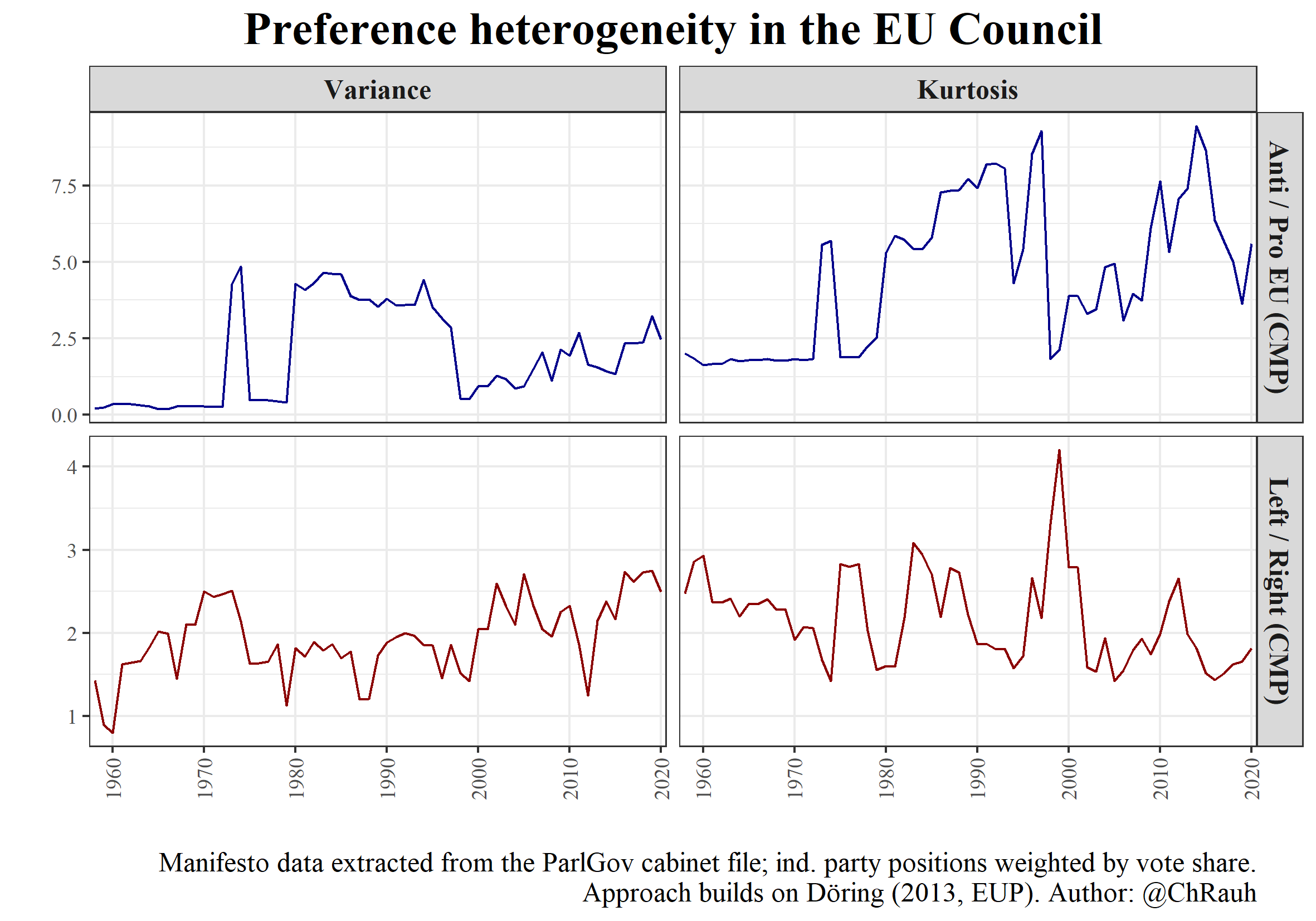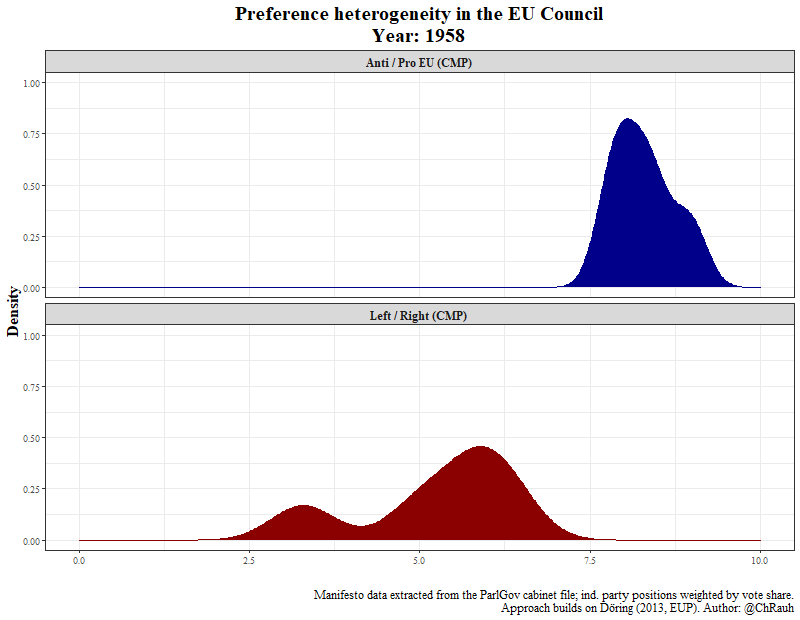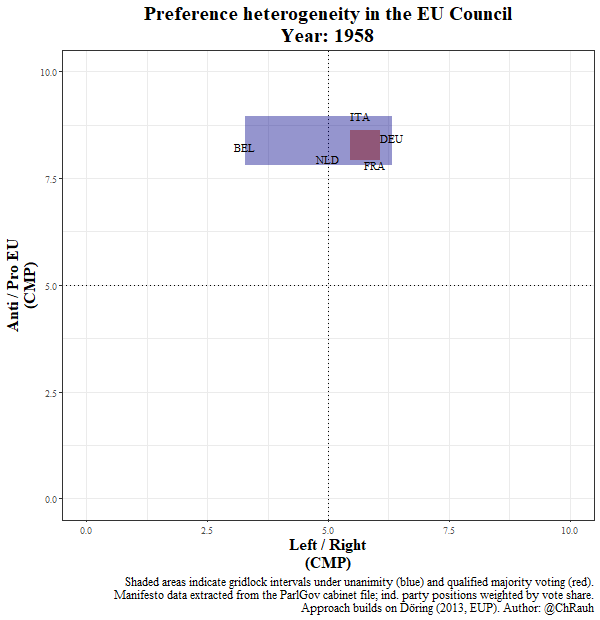Preference heterogeneity in the EU Council of Ministers
visualization
data
teaching
Assessing the space for intergovernmental agreement in the EU over time
For my teaching on spatial / institutionalist analysis of EU decision-making, I followed the leads by Holger Döring (2013) and plotted the aggregated positions of EU member state governments in the Council on two key dimensions of partisan conflict (extracted from the Comparative Manifesto Database).
Static perspective

Distributions of positions over time

Gridlock/agreement intervals by decision-rule over time
